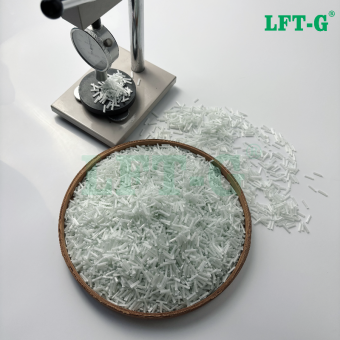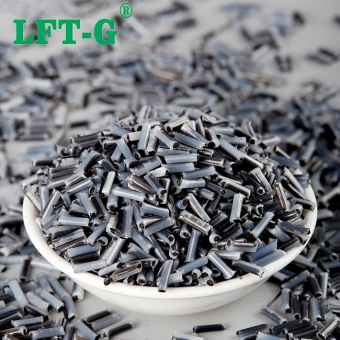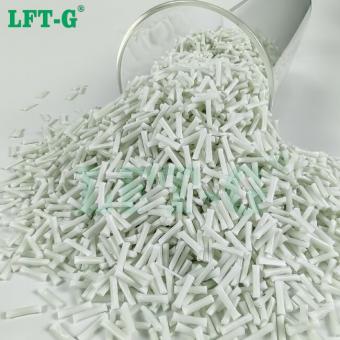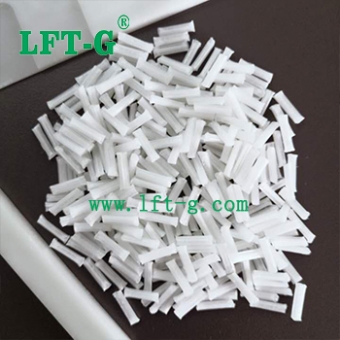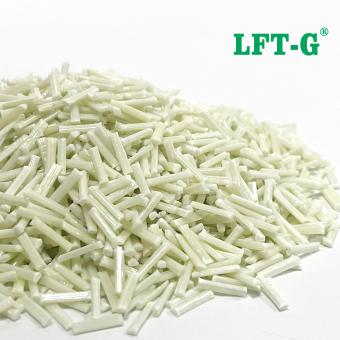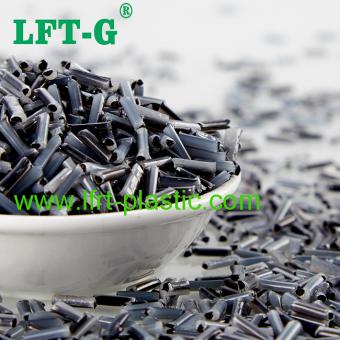-
lft-g PA66 nylon66 relleno de fibra de carbono larga 20% -60% plástico modificado color natural de mayor rendimientoMaterial Introduction In 1935, Wallace Carothers, a scientific researcher at DuPont, and his team successfully synthesized PA66 by condensation of adipic acid and adipic diamine for the first time, and DuPont completed the commercial production of PA66 fiber in 1939. Starting in the 1950s, PA, including PA6 and PA66, was developed for the production of injection molded products to replace metal to meet the requirements of light weight and cost reduction of industrial products. At present, PA66 is the most used PA species other than PA6. PA66 Scientific name: Polyhexanediamide Abbreviation: PA66 Common name: Nylon 66 PA66 has many similarities with PA6. PA66 is also a transparent to milky white granule that can take on almost any color with the addition of a colorant (masterbatch) specific for polymers. Material properties Similar to the basic properties of PA6, PA66 also has low specific gravity, high tensile strength, wear resistance, good self-lubrication, and excellent impact toughness. In addition, because the number of hydrogen bonds in PA66 is more than in PA6, the intermolecular force of PA66 is stronger than the intermolecular force of PA6, which makes the internal structure of PA66 more compact than PA6, with better thermal properties, higher rigidity and toughness, better dimensional stability, lower water absorption, and more wear resistance. However, PA66 has a higher market price than PA6 and is not as easy to process and mold as PA6. Like PA6, PA66 can also add a certain percentage of glass fiber, carbon fiber, etc. to improve the performance and meet the application needs of different products. The following table is a PA66-LCF30 performance table produced by Xiamen LFT composite plastic company. Materials Application PA66 has higher hardness, mechanical strength, toughness, self-lubrication, friction resistance, heat resistance after the addition of carbon fiber, and is widely used in automotive parts, electrical and electronic, as well as mechanical and engineering parts and other fields. Automotive parts PA66's low specific gravity, high rigidity, strong toughness, heat resistance and gasoline resistance make it widely used in automotive modules, automotive structural parts, automotive interior and exterior parts, automotive transmission system and chassis shield, automotive fuel system, automotive ignition system, etc. The products involve automotive cable channel modules, structural parts of front-end components of automotive sunroof system, automotive rearview mirror bracket, automotive radiator, headlight support frame, door module, seat structural parts, seat shell and backrest, dashboard skeleton, air cooler fan, etc. Electrical and electronics PA66's good insulation, flame retardancy and corrosion resistance make it suitable for making various connectors, switches, sockets, terminal blocks, wire coverings, wire ties, insulating spacers, circuit breaker housings, transformer bobbins, retaining clips and motor parts after glass fiber reinforcement. Mechanical and engineering parts PA66's good rigidity, toughness, self-lubricating properties, heat and abrasion resistance make it suitable for manufacturing various nuts, screws, cable ties, worm gears, rotating wheels, gears, pump impellers, pulley sleeves, bushings, solenoid distribution valve seats, power tool housings, pipes, luggage racks, fan housings, appliance housings, door and window frames, cable drag chains and large machine tool baffles. Details Number Color Longitud Muestra Paquete MOQ El tiempo de entrega Puerto de carga PA66-NA-LCF30 Color natural (se puede personalizar) 12 mm aproximadamente (se puede personalizar) Disponible 20kg/bolsa 20kg 7-15 días después del envío Puerto de Xiamen Otros productos que quizás te preguntes pa6-lcf pa 12 -lcf p e e k-lcf Preguntas frecuentes P. ¿Cómo elegir el método de refuerzo y la longitud del material cuando se utiliza material termoplástico reforzado con fibra larga? A. La selección de materiales depende de los requisitos de los productos. Es necesario acceder a cuánto se mejora el contenido y qué extensión es más adecuada, que dependen de los requisitos de rendimiento de los productos. P. ¿Bajo qué circunstancias la fibra larga puede reemplazar a la fibra corta? ¿Cuáles son los materiales alternativos comunes? R. Los materiales tradicionales de fibra cortada se pueden reemplazar con fibra de vidrio larga y materiales LFT de fibra de carbono larga en el caso de clientes cuyas propiedades mecánicas no se puedan cumplir o donde se deseen sustitutos de metal más altos. Por ejemplo, la fibra de vidrio larga de PP a menudo reemplaza a la fibra de...
- gránulos pa66 autónomos
- Gránulos pa66 reforzados de alta resistencia y dureza.
- poliamida reforzada66 lcf
- poliamida 66 plásticos de ingeniería lcf
- PA66 6 gránulos LCF de doble tornillo
- reciclar termoplástico pa66 largo fibra de carbono
Etiquetas :

 correo electrónico
correo electrónico español
español English
English français
français Deutsch
Deutsch русский
русский italiano
italiano português
português العربية
العربية 日本語
日本語 한국의
한국의 中文
中文




